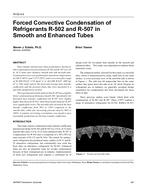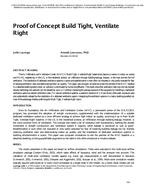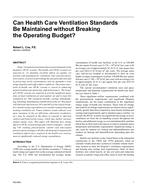Click here to purchase
The objective of this work is to study the effect of the human wake flow field due to prostration cycle during prayers and its effect on thedispersion of resuspended particles from the floor. During prostration, the human upper body rotated forwards and backwards to and away from the floorrespectively at a speed of 0.9 rad/s. This was investigated through computational fluid dynamics (CFD) model coupled with a dynamic mesh adapting tothe prostration motion at a time step of 0.0005 s. Experiments in a climatic chamber with a moving thermal manikin were conducted to validate theprostration wake flow governing particle behavior. The validated 3D CFD model was used to track the behavior of particles resuspended from the floorusing the Lagrangian technique at particle sizes of 5 μm (1.64e-5 ft). It was shown that prostration-induced wake disturbed the flow in the person’smicroenvironment. The forwards and backwards rotations resulted in pressure differences and a wake flow following behind the upper body at maximumvelocities of 1 m/s (3.28084) and turbulence intensities of 20%. When the manikin rotates backwards away from the floor, the airflow was movingvertically upwards and was pushed out and pulled back into the wake. This suction effect transported particles from the lower levels near the floor anddispersed them to higher levels (occupied zone). Thus, particles were able to reach the occupant’s breathing level. Concentration fields showed that thebreathable air quality deteriorated, especially when the manikin was near the floor. Contamination risks decreased gradually as the manikin moved awayfrom the floor to reach the vertical upright position once more.
Citation: 7th International Conference on Energy Research and Development
Product Details
- Published:
- 2019
- Number of Pages:
- 10
- Units of Measure:
- Dual
- File Size:
- 1 file , 1.1 MB
- Product Code(s):
- D-2019ICERD7-037


